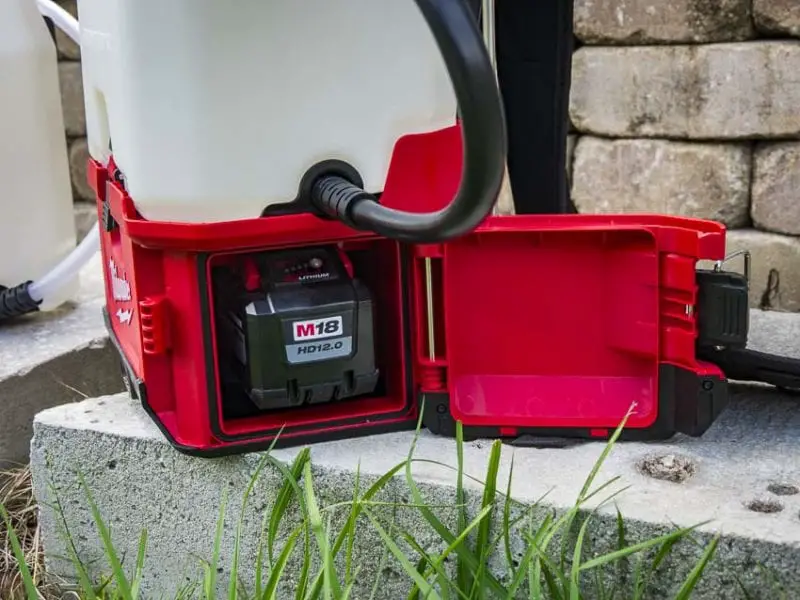Views: 57
How to prime Milwaukee backpack sprayer? Follow this simple step-by-step process to get your sprayer ready in no time!
Once pressure is built, the Milwaukee backpack sprayer is primed and ready to use. Whether you’re maintaining your garden or lawn, having a reliable backpack sprayer can make the job much easier. The Milwaukee backpack sprayer is a versatile and efficient tool for applying pesticides, herbicides, and fertilizers.
However, before you can start using it, it’s crucial to know how to prime the Milwaukee backpack sprayer properly. In this guide, we’ll walk you through the simple steps to ensure your sprayer operates smoothly and effectively every time. Let’s get started!

Credit: m.youtube.com
Contents
Step-by-step Guide To Prime Milwaukee Backpack Sprayer
Are you struggling with priming your Milwaukee backpack sprayer? Don’t worry, we’ve got you covered. In this step-by-step guide, we’ll walk you through the process of priming your Milwaukee backpack sprayer to ensure it’s ready for use whenever you need it.
Check The Backpack Sprayer
Before you start priming your Milwaukee backpack sprayer, it’s essential to check the sprayer for any visible damage or obstructions. Ensure that all the components are in good condition and that there are no leaks.
Fill The Tank With Water
Fill the tank of the backpack sprayer with clean water, ensuring that it’s filled to the recommended level. This will ensure that the pump is adequately primed and ready for use.
Release The Pressure
Prior to priming, release any pressure that may have built up in the sprayer by loosening the pump handle or trigger. This step is crucial for the priming process to be effective.
Remove The Pump Assembly
Next, carefully remove the pump assembly from the backpack sprayer, following the manufacturer’s instructions. Take care not to damage any components during this process.
Prime The Pump Assembly
Using the recommended method in the user manual, prime the pump assembly to ensure that it’s properly lubricated and ready for use. This step is crucial for the efficient operation of the sprayer.
Reinstall The Pump Assembly
Once the pump assembly has been primed, carefully reinstall it back into the backpack sprayer, ensuring that it’s secured properly. Double-check that all connections are tight and secure.
Test The Backpack Sprayer
Finally, test the backpack sprayer to ensure that it’s working correctly. Pump the handle or trigger to pressurize the sprayer and check for any leaks or irregularities. If everything looks good, your Milwaukee backpack sprayer is now primed and ready for use!

Credit: www.amazon.com
Tips And Tricks For Priming Milwaukee Backpack Sprayer
Priming a Milwaukee backpack sprayer is an essential step in ensuring its proper functionality. Here are some tips and tricks to help you prime your sprayer effectively and maintain its performance over time.
Choose The Right Nozzle
Selecting the appropriate nozzle for your specific spraying needs is crucial for priming the backpack sprayer efficiently. Different nozzles are designed for various applications, such as wide-angle, narrow-angle, or adjustable nozzles. Be sure to choose a nozzle that suits the type of chemicals you will be spraying and the targeted surface area.
Clean The Sprayer Regularly
Regular cleaning of the backpack sprayer is essential to maintain its performance and prevent clogging. After each use, thoroughly rinse the sprayer with clean water to remove any residue and keep the nozzle clear. This practice will also help prevent cross-contamination of chemicals and ensure the sprayer’s longevity.
Use The Right Amount Of Chemicals
Using the correct amount of chemicals is crucial for effective priming and spraying. Overloading the sprayer with excessive chemicals can lead to inefficient priming and potential damage to the equipment. Follow the manufacturer’s guidelines for the recommended chemical dilution and application rates to achieve optimal results.
Store The Sprayer Properly
Proper storage of the backpack sprayer is essential for maintaining its functionality and longevity. After each use, ensure that the sprayer is thoroughly cleaned and stored in a dry, well-ventilated area away from direct sunlight and extreme temperatures. This will help prevent corrosion and damage to the sprayer’s components.
Common Problems And Solutions
Air Leaks
One common problem with Milwaukee backpack sprayers is air leaks. Air leaks can lead to a loss of pressure and inefficient spraying. To fix this issue, check all the connections and seals for any signs of wear or damage. Tighten or replace any loose or damaged parts to ensure a secure seal and prevent air leaks.
Clogged Nozzle
Another issue that may arise is a clogged nozzle, which can disrupt the spray pattern and reduce the effectiveness of the sprayer. To address this problem, remove the nozzle and soak it in a cleaning solution to break down any built-up residue. Use a small brush to gently clear any obstructions and ensure the nozzle is free from any blockages before reattaching it to the sprayer.
Lack Of Pressure
If you are experiencing a lack of pressure in your Milwaukee backpack sprayer, it may be due to a variety of factors. First, check that the tank is properly pressurized according to the manufacturer’s guidelines. If the tank is pressurized correctly, inspect the pump for any damage or wear that may be affecting its performance. Clean or replace any worn components to restore proper pressure to the sprayer.
Leaking Tank
Leaking tanks can be a frustrating issue with backpack sprayers. To address this problem, inspect the tank for any cracks, holes, or damaged seals. Replace any damaged components and ensure all connections are properly tightened to prevent leaks. Regularly inspecting and maintaining the tank can help prevent leaks and prolong the lifespan of your Milwaukee backpack sprayer.
Credit: www.milwaukeetool.com
Frequently Asked Questions
How Do You Prime A Backpack Sprayer?
To prime a backpack sprayer, fill the tank with water, close the lid tightly, and pressurize the tank. Then, open the nozzle and release the pressure to expel air and fill the pump with water. Finally, close the nozzle and pressurize the tank again for use.
Where Is The Filter On A Milwaukee Backpack Sprayer?
The filter on a Milwaukee backpack sprayer is located at the end of the suction tube. It is designed to prevent debris from entering the pump and clogging the nozzle.
Why Is My Ryobi Backpack Sprayer Not Spraying?
Check if the nozzle is clogged or the battery is charged. Ensure proper assembly and tight connections. Clean or replace clogged parts.
What Is A Switch Tank?
A switch tank is a container that allows switching between different liquids quickly and efficiently.
Conclusion
To sum up, mastering the art of priming your Milwaukee backpack sprayer is crucial for efficient spraying. By following the steps outlined in this guide, you can ensure optimal performance and longevity of your equipment. Don’t forget to regularly maintain and clean your sprayer for best results.
Happy spraying!

